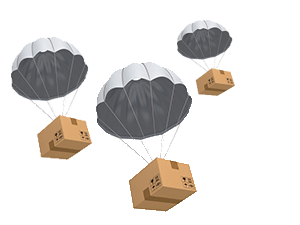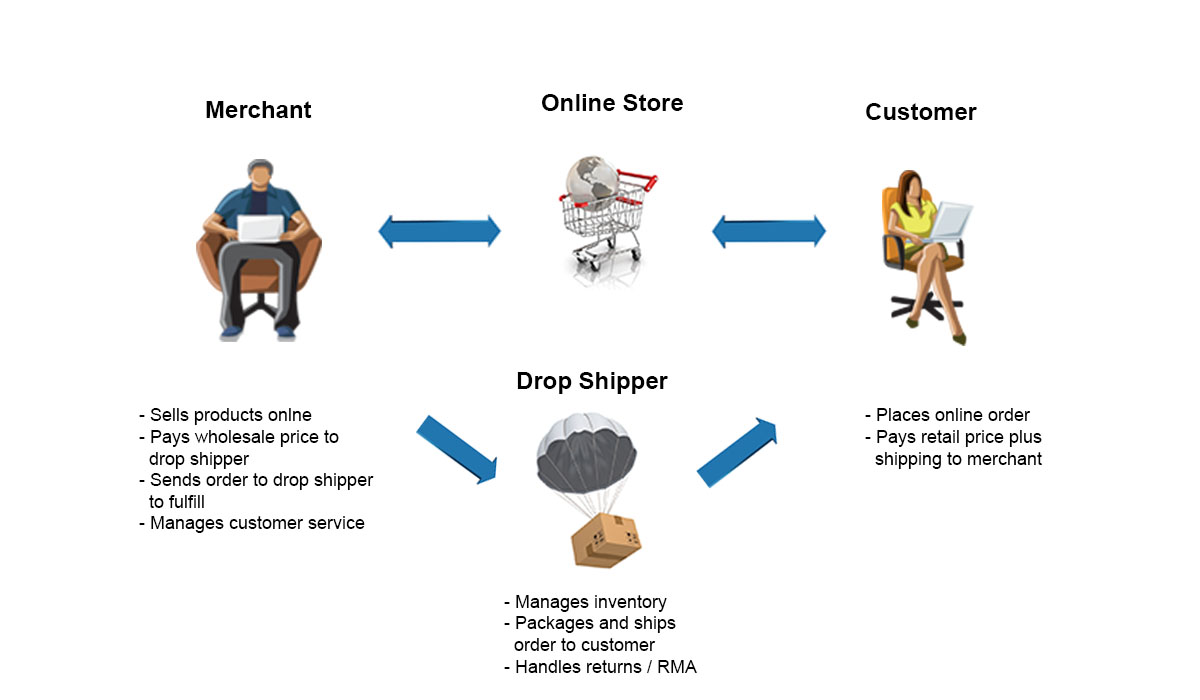Wouldn’t it be great to start an online store with very little investment upfront and manage it from anywhere in the world? Are you ready to free up your precious time, and let a supplier pay your upfront inventory costs and manage the processing and shipment of orders. This all might sound too good to be true, but with drop shipping for eCommerce, it’s all possible.
If you take the steps to learn how to build a drop shipping business, it’s important to understand the pros and cons the fulfillment method can have.
With this method, you don’t need to keep the products you sell in your stock. Instead, you partner with a wholesale supplier that not only stocks the inventory for you, but the supplier then processes and sends orders directly to your customers – you never see or touch the product! Processing drop ship orders is a breeze, and you can spend all the free time you save on boosting your brand.

The Advantages
There are a lot of advantages to drop shipping for eCommerce, starting with the convenience and low costs it can offer. With these highlighted features, it is expected to become an even more relevant eCommerce trend this year. The biggest advantage is not having to buy inventory upfront. It’s basically a pay-as-you-go model, because you don’t purchase products until you make a sale and the customer pays, so you don’t tie up your funds in inventory. Since you don’t have to pick, pack and ship the products, it frees up your time to focus on what matters – revenue generating activities like promoting your website and investigating marketing tactics.
Spending time on promoting your website is key to your eCommerce success. The fact that it’s easy to establish an eCommerce store with the drop ship model is a double edged sword – it’s as easy for others as it is for you! That means competition is sometimes steep. However, with a little bit of time and effort, you can make your store stand out, resulting in a successful online business.
Some Drawbacks Do Exist
Like anything else, the good and the bad are bound to collide. In the case of drop shipping, aside from competition, there are some other drawbacks, but nothing that can’t be overcome with a little planning and strategizing. By putting your product fulfillment in the hands of another, you do give up a degree of control in terms of the way the product is packed and shipped, as well as running the risk of an item being out of stock. The latter is easily overcome by working with multiple suppliers with overlapping product lines, so you always have a backup plan.

Overall, the drawbacks are minimal in comparison to what it would cost you, in both time and money, to stock, house and ship products yourself. And, at the end of the day, drop shipping isn’t a new concept. It’s a fulfillment model trusted by some of the big guys in the eCommerce game, such as Sears and Home Depot, giving them an opportunity to expand product lines without dealing with the hassles associated with additional inventory. Even though some problems can arise, drop shipping for eCommerce is likely not going anywhere, anytime soon.
How To Get Started
Learning how to build a drop shipping business does not have to be challenging. With a few tips to get started, you can be on your way to using your time to focus on other business measures, besides shipping.
Final Thoughts
Drop shipping offers a great alternative method to get started, or expand your current product offering, without having to dip too far into your own pocket. Of course, there will be some investment involved in establishing your eCommerce presence, but nothing compared to what it would cost if you had to stock and ship your own product. With integrated shipping for accuracy & control, drop shipping makes sense for many smbs.
For a full list of both the benefits and drawbacks of the drop ship fulfillment model, check out eBook on






